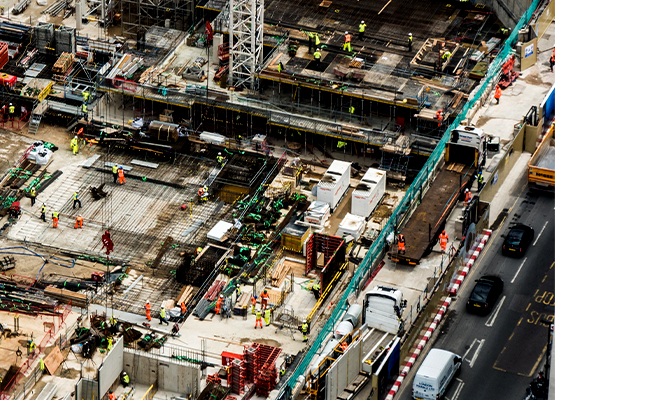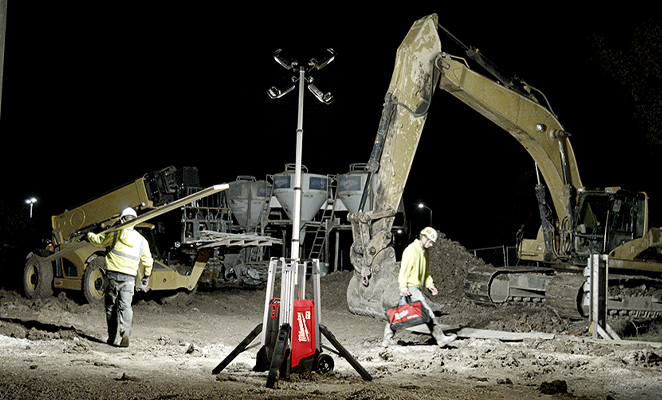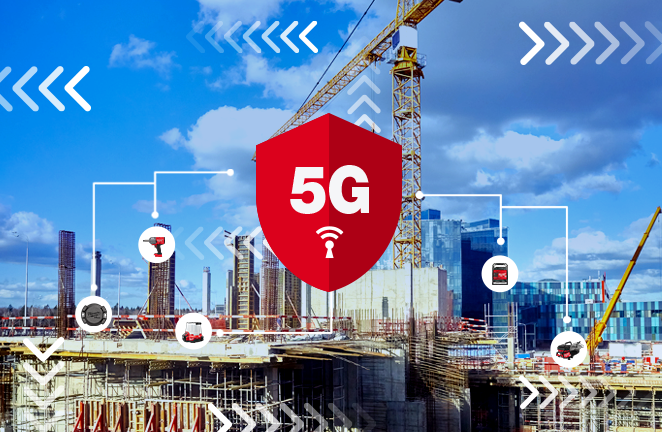For Milwaukee®, and the construction industry as a whole, the next generation of wireless network technology will almost certainly usher in a broader bench of smart tools, driverless machines, remote work sites with real-time connectivity, immersive augmented/virtual reality environments, increasingly sophisticated digital platforms for inventory management and tool tracking like One-Key, and a whole host of exciting developments we have yet to imagine.

It’s easy to be dazzled by the possibilities. But with new heights come new perils, and we need to be vigilant. With Gartner predicting two-thirds of organizations intending to deploy 5G by 2020, the demand for it rises more quickly than communications providers can deliver. And herein lies a problem.
A higher dimension of 5G-specific cybersecurity threats awaits us on the horizon. For the sake of safety on the jobsite and your team, it’s important that we in the construction industry try to anticipate and prepare for those vulnerabilities now so we aren’t caught flat footed later.
Who will build the network of the future?
Due to its highly publicized nature, the first vulnerability worth mentioning here is the one you’re most likely to have heard of already: Huawei. That’s the name of the Chinese telecommunications company poised to build the bulk of the global 5G infrastructure. The federal government has voiced concerns that the company might use its hardware to spy on U.S. citizens and extract data from companies. Huawei has denied these claims, and U.S. telecom companies like Nokia, Samsung, and Cisco are racing to build their own 5G capability in response.
But the amount of time and resources involved in this process, and what’s still needed to get to a stage of full deployment, should not be understated. And there are no shortcuts, either. After all, using devices without a private 5G network or technical knowledge could put organizations' and their employees' privacy at risk.
The Internet of Things
The potential for international spycraft aside, 5G is expected to lead to an explosion in the Internet of Things (IoT). In fact, 59% of organizations surveyed by Gartner expect 5G-capable networks to be widely used for IoT.

But there’s no doubt that this will open up a vast new swath of what cybersecurity experts call “attack surfaces”: cracks in the armor of a system that can be exploited by hackers and other bad actors. Thanks to 5G, an expanding array of everyday objects will be able to connect to the internet all at once. For the construction industry, this means more smart tools like all of our One-Key compatible tools. But unless each object or tool is outfitted with security software, then each one is vulnerable to attack and is effectively a new back door into sensitive company, client, and operational data housed in the network.
At Milwaukee, our One-Key team has a rigid QA process in place to prevent this. Our software developers work closely with our electrical engineers to ensure that the hardware and software of our compatible tools and equipment are working in perfect union prior to delivering them to market. But this is also, importantly, an ongoing process that constantly evolves so that, as we grow our platform, if we do find a vulnerability, we patch it immediately. Importantly, to ensure the integrity of IoT devices, and the networks on which they operate, there must be a strong unity among these devices’ hardware, software, and how they’re configured. Thus, it’s critical for any IoT professional to vet their software, test their devices against it, and deliver cybersecurity best practices for their customers.

But for contractors, construction companies, and equipment managers, you should also make sure you’re downloading the newest versions of the software as it’s suggested. This will prevent attackers from being able to take advantage of any of the possible software vulnerabilities that your service providers have identified.
What an attack might look like
Brookings reported last year five ways 5G networks are more susceptible to cyberattacks.
A recent security assessment shows that, due to the decentralized form and function of 5G networks, early versions will likely be vulnerable to multi-angular denial of service attacks. This happens when an attacker attempts to crash a computer network by overloading it with requests.

Apart from possibly being used as an entry point into sensitive information, a state-of-the-art digital handsaw isn’t much use if it’s locked down remotely by a hacker, and can be a serious safety hazard if made to suddenly malfunction in a worker’s hands. The problem is all the more serious at scale, as more and more of our critical infrastructure will grow inextricably enmeshed with and reliant upon the 5G network.
All this to say, while we may know how to build the city of the future, there is still a significant need to reinforce the 5G infrastructure such that its digital foundations are fortified against serious cyberattacks.
The Silver Lining
5G, from a cybersecurity perspective, is not all doom and gloom. Once 5G is fully, and securely, deployed, it can introduce several enhanced security features that will be a considerable improvement over 4G. Examples include improved integrity protection mechanisms, encryption, and better protection against attempts to introduce rogue radio devices and other unauthorized devices. The authorization and authentication process of mobile devices is also stronger when, of course, implemented properly. What’s more, with the faster download speeds that 5G offers can deliver faster data processing and, thus, faster threat detection.
Furthermore, using 5G to communicate between systems, some cloud providers, like AWS & Azure, are already working with telecom companies to embed cloud services within these companies' network gear. While this allows for even greater performance of internet dependent applications, it means your data could also be housed there, further necessitating the encryption and security of your information and working with companies that have your best interest in mind.
5G future
We’re still years away from the full realization of 5G. Once the capability is here though, we will use it—will have to use it to remain competitive. As the construction industry shifts to lightning fast wireless next-gen tech like driverless machinery and immersive AR/VR environments, it will grow increasingly important that we’re all educated not just in the technical side of our jobs, but the cybersecurity side as well.

Many of the foreseeable vulnerabilities of 5G can be mitigated by designing safeguards into the nodes of the network itself, while also building security measures into each connected smart tool. If they haven’t already, contractors should create plans now for how to respond in the event of a cyberattack on their 5G integrated tools and digital infrastructure.

Bottom line: It’s up to all of us to imagine what exciting possibilities the 5G future will hold for equipment managers and the construction industry at large, as well as the new challenges we will face once that future arrives.





